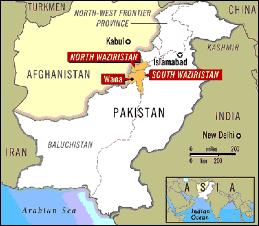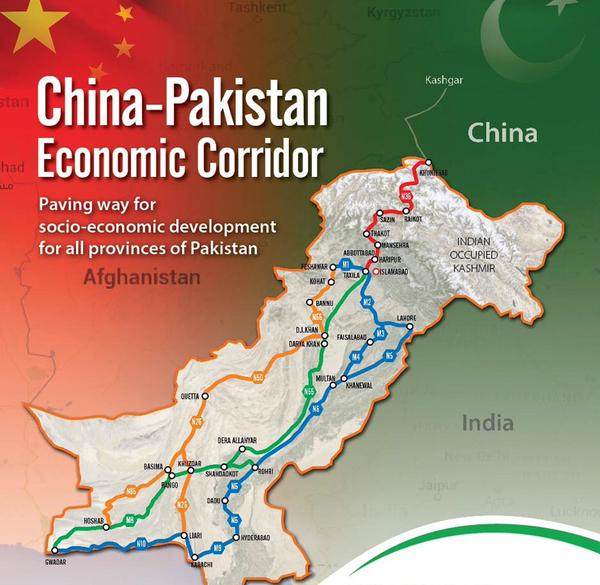Pakistan, the Inevitable Lynchpin

Pakistan is the virtual fulcrum around which much of the geopolitical, geostrategic and geo-economic future of the Afghanistan Pakistan Region, (APR), the South-Central Asian Region (SCAR) and largely the Greater Middle East Region (GMER) is now evolving. No power including the US, China or Russia can realistically hope to secure its national interests in these regions without the active and willing support of Pakistan. It now holds the key to peace (by the defeat of terrorism), interconnectivity (massive infrastructure creation across its territories) and economic development and interdependence (trade corridors, special industrial and economic zones) within and between these regions. Its centrality and absolute inevitability in most matters of import in these regions is now unquestionable.
The APR is currently under a massive, two-pronged diplomatic onslaught by the US and China. The US, the global military behemoth, wants to pacify Afghanistan prior to either leaving it or continuing its occupation in more peaceful environments, whereas China, the marauding economic powerhouse, wants to incorporate it into its economic juggernaut that is magnificently sweeping across Euro-Asia.
The moves by both the powers are simultaneous, aggressive and essentially conflicting in nature. If these moves could somehow be made to complement one another it would not only pacify the APR but also bless it with an enormous epoch-making economic bonanza. However, the conflicting nature of US and Chinese national interests precludes any such prospects, at the moment. Both powers have found the incorporation of Pakistan in their respective efforts inescapable.
Can Pakistan possibly help bridge this chasm between them? Or must it secure its interests by managing them simultaneously albeit independent of one another?
President Trump has made his move in Afghanistan. Swallowing his pride, he has requested PM Imran Khan to urge the TTA/HN
(The Taliban and the Haqqani Network)v onto the negotiating table. Pakistan has responded positively. Resultantly, the first two rounds between the US and the TTA/HN were held in Qatar while the next two were held in the UAE. The representatives of the National Unity Government (NUG) however remained on the side lines. Pakistan, the KSA and the UAE were in attendance. The US wanted the TTA/HN to announce a six – month ceasefire, join the NUG that is to be installed in the future and become a willing and proactive part of the political system of Afghanistan. The TTA/HN, on the other hand, demanded the release of all their prisoners, removal of the ban on the movement of their leaders and the announcement of a deadline for the withdrawal of all foreign troops from Afghanistan. The TTA/H N showed an inclination towards a ceasefire, provided Pakistan, KSA and the UAE became the guarantors and a future caretaker government in Kabul was headed by their nominee.
N showed an inclination towards a ceasefire, provided Pakistan, KSA and the UAE became the guarantors and a future caretaker government in Kabul was headed by their nominee.
Although the demands of the US and the preconditions laid down by the TTA/HN appear mutually exclusive yet the parleys have produced an early thaw in the icy relations. President Trump has indicated the withdrawal of 7000 US troops from Afghanistan, while the NUG has released nine members of the TTA/HN including Anas Haqqani, Sirajuddin Haqqani’s younger brother. These confidence building measures will lessen the friction and augur well for future negotiations.
President Trump’s compulsion to egressing from Afghanistan needs to be analysed.
One, why does he really want to neutralise the TTA/HN at this point in time?
Two, does he want to get rid of the Afghan albatross around his neck before his re-election bid?
Three, or does he want to declare victory and egress from Afghanistan before the 2020 elections to claim a foreign policy success – the way the OBL drama helped President Obama?
Four, or is it that he just wants Pakistan to pacify and neutralise the TTA/HN by engaging them in unending and fruitless peace talks so that the US can perpetuate its occupation in relative peace? The latter point gains importance because the US stands to lose much more in geopolitical, geo-economic and geostrategic terms by egressing from Afghanistan than it gains by doing so!
On the other hand, China continues to pursue its CPEC – BRI Combine relentlessly. It has now adopted a trilateral approach to the APR by incorporating Afghanistan into the CPEC (China Pakistan Economic Corridor). To that end China needs to foster friendly, cooperative and mutually beneficial relations between Pakistan and Afghanistan.
Terrorism in the APR has to be comprehensively defeated through their coordinated efforts and interconnectivity and economic interdependence enhanced. A Peshawar-Kabul motorway, a railway link from Chaman to Kandahar to Herat and onto Mashhad, Iran, potentially linking up Pakistan-Afghanistan (CPEC) with the Baayannur China – Alamty, Kazakhstan – Tashkent & Samarkand, Uzbekistan – Bayramali, Turkmenistan – Mashhad & Tehran/Chahbahar(?), Iran railway link may be on the cards. This would be interconnectivity at the SCAR-GMER level with enormous connotations for economic interdependency and development. Therefore, parleys between Afghanistan, China and Pakistan (Regional Economic Cooperation Conference in Afghanistan-RECCA) were held recently where it was resolved to fight terrorism together, create further infrastructure for Pak-Afghan connectivity and beyond. China clearly wants Pakistan and Afghanistan to become peaceful, mutually supporting and fully proactive participants in the manifestation and furtherance of its CPEC-BRI Combine.
As the inevitable lynchpin in the region Pakistan is in a very advantageous position. It has engaged the US and China through a sublime two-pronged diplomatic manoeuvre too, as they implement major policy decisions in its neighbourhood. The US needs Pakistan to facilitate its egress, (if required), and/or continuous engagement with the APR and surroundings. China needs Pakistan for its critical link to the Persian Gulf/Arabian Sea/Indian Ocean Region, GMER, Africa, Europe and beyond in furtherance of its CPEC-BRI Combine. However, both US and Chinese efforts are proceeding on parallel streams with no prospects of their ever converging. Pakistan, therefore, must secure its interests by dealing with both separately, albeit simultaneously, without one adversely affecting the other!
The APR is at the cusp of peace, tranquillity, massive foreign direct investments in infrastructure and economy, meaningful interconnectivity, development and genuine progress. The onus is on President Ashraf Ghani and PM Imran Khan now to exploit these opportunities to the abiding benefit of their and other peoples of the region at large.
Imran Malik is a retired Brigadier of the Pakistan Army and the frequent contributor to Global Research.


